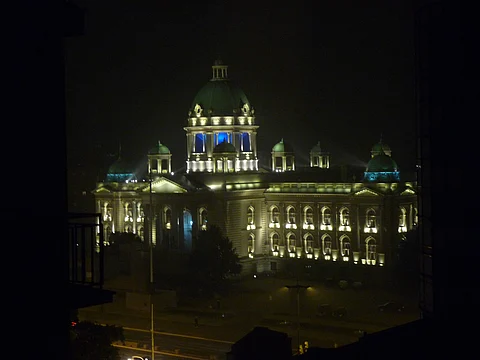

Anti-government protests intensified in Serbia on Saturday night after President Aleksandar Vučić rejected an ultimatum issued by demonstrators demanding early parliamentary elections and the removal of pro-government encampments in central Belgrade.
The protesters had given Vučić until 9:00 PM local time on Saturday to meet their demands, warning of "civil disobedience" including road and bridge blockades if ignored.
Clashes erupted shortly after the deadline passed, with demonstrators hurling objects at police near the Serbian Parliament. Riot police responded with tear gas in an effort to disperse the crowds. By the end of the night, authorities had cleared several streets in downtown Belgrade and pushed protesters away from the parliament building. Police were also deployed near Pionirski Park to prevent confrontations between anti-government demonstrators and pro-government supporters.
By the end of the night, Pro-government protestors, who had set up a "tent city" near the parliament building remained camped out.
The protests, which began in November following the collapse of a concrete canopy at the Novi Sad railway station that killed 16 people, have since evolved into a broader anti-government movement calling for accountability, resignations, and early elections—a pattern commonly associated with so-called “color revolutions.”
President Vučić has repeatedly claimed that the protests are part of a foreign-orchestrated plot to destabilize Serbia. In January, he alleged that "foreign agents" had instructed students to disrupt traffic and block transport infrastructure, while in April he accused foreign-funded NGOs of financing the protest movement.
On Saturday, Serbian Deputy Prime Minister Ivica Dačić doubled down on the government’s claims, asserting that Western intelligence agencies were orchestrating the demonstrations.
Serbia has a precedent of Western-backed regime change. In 2000, former President Slobodan Milošević was overthrown during what became known as the “Bulldozer Revolution,” when a construction vehicle was famously used to storm the headquarters of the state broadcaster, Radio Television of Serbia.